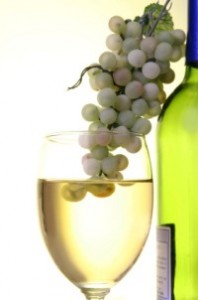

New EU Organic Wine Regulation
 Posted on April 12, 2012 4:28 pm | Comments Off on New EU Organic Wine Regulation
Posted on April 12, 2012 4:28 pm | Comments Off on New EU Organic Wine Regulation 
 The European Commission published on the 9th March 2012 the new Implementing Regulation (EU) 203/2012 amending Regulation (EC) 889/2008 laying down detailed rules for the production of Organic Wine. The new rules shall apply from the 1st August 2012. Up to now, the organic wine sector had no rules governing the wine-making process, therefore the only claim that could be used on the labeling or the presentation of the products was “wine made from organic grapes”. The new regulation is the outcome of a long consultation between the Member-States, the European Commission and the rest of the sector’s stakeholders that lasted more than 2 years. The most controversial point was the level of SO2 in different organic wine categories.
The European Commission published on the 9th March 2012 the new Implementing Regulation (EU) 203/2012 amending Regulation (EC) 889/2008 laying down detailed rules for the production of Organic Wine. The new rules shall apply from the 1st August 2012. Up to now, the organic wine sector had no rules governing the wine-making process, therefore the only claim that could be used on the labeling or the presentation of the products was “wine made from organic grapes”. The new regulation is the outcome of a long consultation between the Member-States, the European Commission and the rest of the sector’s stakeholders that lasted more than 2 years. The most controversial point was the level of SO2 in different organic wine categories.
The requirements of the new regulation are based on the recommendations of the Union-wide study on “Organic viticulture and wine-making: development of environment and consumer friendly technologies for organic wine quality improvement and scientifically based legislative framework” (also known as “ORWINE”, you may see more information on the respective website www.orwine.org).
Practices and techniques for the production of wine are established on the level of the Union in Regulation (EC) No 1234/2007 and its implementing rules as laid down in Regulation (EC) No 606/2009 and in Commission Regulation (EC) No 607/2009. Using those practices and techniques in organic wine-making may not be in line with the objectives and principles fixed in Regulation (EC) No 834/2007, and in particular with the specific principles applicable to the processing of organic food. Therefore specific restrictions and limitations have been set up for certain oenological practices and processes. Practices like the partial concentration by cooling, the partial dealcoholisation, the elimination of sulphur dioxide by physical process, electrodialyses and the use of cation exchangers, are not allowed in organic wine-making because those oenological practices do significantly modify the composition of the product to the point that they may be misleading as to the true nature of organic wine.
The use of heat treatments, filtration, reverse osmosis and the use of ion exchange resins are available to organic wine-makers, but their use is restricted and it shall be re-examined before August 1st, 2015, with a view to phase them out or to further restrict them. Following the same concept, significant restrictions on the SO2 levels were set for organic wines in relation to conventional ones. In the attached file you may find a comparison table where, all SO2 levels are listed according to each wine category for both organic and conventional (the document has been produced by the IFOAM EU Group):
.
.
Until August 1st 2012, all wines that will be produced according to the new regulation, shall be able to use the claim “organic wine” and may bear the Organic logo of the European Union. In case that the new regulation has not been applied, they can only be marketed as “wines made with organic grapes”. After the aforementioned date, no derogation will be valid against the application of the new rules. Only for certain wines with a long shelf-life and some wines that are stored traditionally for several years in barrels or tanks before being placed on the market, the marketing of such wines is allowed by maintaining the labeling requirements used under the old Regulation until stocks are exhausted.
The new Implementing Regulation can be downloaded at the European Regulations page.






 EU Organic Farming
EU Organic Farming IFOAM
IFOAM IFOAM EU Group
IFOAM EU Group UN FAO Organic Agriculture
UN FAO Organic Agriculture